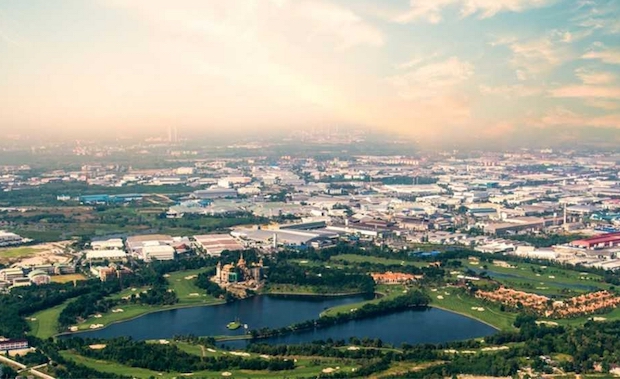Buying existing factory buildings speeds market entry
Valuing industrial land and buildings can be especially tricky and purchasers need expert advice
- Published: 09 Dec 2018 at 11:09 0 comments
- WRITER: By Adam Bell

Amata Corp, one of the country’s largest industrial estate operators, has set aside about 100 rai at its Chon Buri site for smart city development.
Related Stories
Many industrial space occupiers, whether they are starting or expanding a business, want to buy an existing industrial building rather than buying land and constructing a new building or renting a ready-built factory. The key advantage of buying an existing building, if they want to own the property, is speed.
There are a number of factors a purchaser should consider if they choose to acquire a second-hand factory. The first is what price they should pay.
There are several reasons why a seller would dispose of a factory including change of business, expansion to a new facility, the property being unwanted after a merger, or the failure of a business and the requirement to sell off assets. When pricing a property for sale, sellers often consider the market price of land, cost of the building and the book value of the asset, and the book value is often the lowest price that they will initially accept.
The land value, particularly in industrial estates or parks where land is regularly bought and sold, is not difficult to ascertain. The book value of any building is obtained by using Thai accounting standards to depreciate the building asset value according to its age.
The market value of the building can often be lower than the book value in the accounts and this is often an obstacle in negotiations. Market value is the price a willing buyer and a willing seller agree in an arm’s length transaction after proper marketing whereas book value is a simple formula.
Unlike many other types of property, many factory properties do not appreciate in value although the land they are sited on may increase in price.
The value of the building depends on not just its age, but also its specification, layout and condition. Buildings that have been specifically designed around one manufacturing process may be unsuitable for another use and, therefore, worth significantly less to a potential purchaser — the original cost is irrelevant to a prospective purchaser.
In my experience, it takes time for sellers to be able to agree to a price less than book value because any price lower than book value is an accounting loss which is hard to accept.
Any potential purchaser making a bid needs to understand the motivations of the seller, particularly how quickly they want to sell, as this will drive their negotiating position on price.
I would recommend that any potential buyer employ a qualified structural engineer to examine the property and view the as-built-drawings as part of the due diligence process and inform the seller of any environmental due diligence that they need to undertake and that this will often be a condition of the sales and purchase contract.
I also recommend that the purchaser employ a qualified lawyer to undertake legal due diligence on permits, title and any encumbrances as well as preparing the sales and purchase agreement.
If the property passes due diligence and a price is agreed, then the transaction process is relatively straightforward, and transfer of title can often be completed within as short a time as 30-60 days.
The availability of greenfield sites is limited in some locations such as the older industrial estates to the east of Bangkok such as Lat Krabang, Wellgrow, Bang Phli and Bang Pu and this scarcity of a greenfield option can push up the prices of existing older buildings particularly where the purchaser has an existing factory on the estate and needs the new factory to be a close as possible to the old one.
There is not that much property on the market in the most popular locations so it is not always possible to find the right size and specification of property and a potential purchaser may have fallen back on the option of buying land and constructing a new building, but if an existing building is available then it means that the buyer can start production much more quickly.
Adam Bell is associate director, head of advisory and transaction services - Industrial & Logistics, with CBRE Thailand. He can be reached at bangkok@cbre.co.th; Facebook: CBRE.Thailand; Twitter: @CBREThailand; LinkedIn: CBRE Thailand; Website: www.cbre.co.th

0 people commented about the above
Readers are urged not to submit comments that may cause legal dispute including slanderous, vulgar or violent language, incorrectly spelt names, discuss moderation action, quotes with no source or anything deemed critical of the monarchy. More information in our terms of use.
Please use our forum for more candid, lengthy, conversational and open discussion between one another.
Click here to view more comments